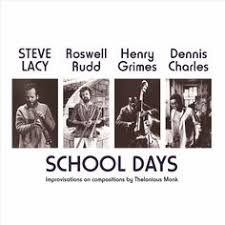The Bebop language had so taken hold that subsequent 1950's jazz styles were deeply in its debt[all these names could have quotation marks around them]: Cool, West Coast, the Tristano school, Hard Bop, Chamber jazz, Soul Jazz.
Questions present themselves: Was it easier for these players to make the dramatic musical leap they did because they were less in thrall to bop? If so, why? One thing strikes me-the language of bop is so rich and deep that it can simply be addictive. Once you're inside it, it's easy to become obsessed with exploring it.




Bop is also formally rigorous. Players can tell when you're skating, and because the rigor is the key to its richness and depth, you could conceivably play some totally original stuff that would sound like skating because it didn't follow the formal rigor.
ReplyDeleteRIght. Well, that's why there was such a schism in the way Ornette and Cecil's music was greeted.
ReplyDelete